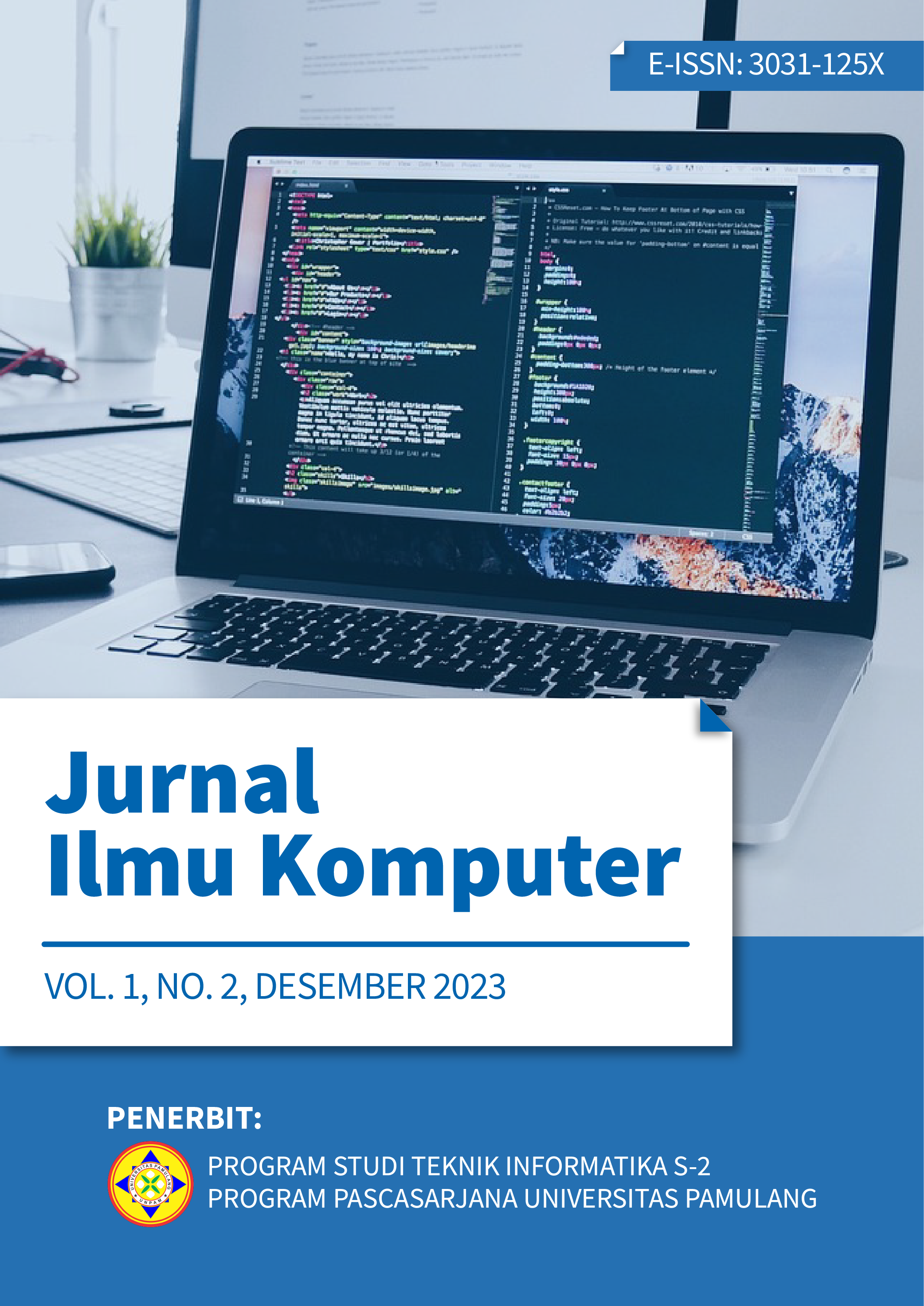Analisis Minat Siswa Dalam Memilih Kompetensi Keahlian Dengan Metode Simple Additive Weighting (SAW) dan Multi-Objective Optimization on The Basis of Ratio Analysis (MOORA)
Keywords:
Skill Competencies, Vocational High Schools (SMK), Decision Support Systems, SAW, MOORAAbstract
Every student who graduates from middle school plans to continue their education to the high school/vocational school level. Vocational Schools are schools that develop and prepare students to be able to work in their respective fields. There are 3 Skill Competencies, namely, 1) Institutional Financial Accounting, 2) Office Management and Business Services, and 3) Computer Network and Telecommunications Engineering. Of these 3 skill competencies, prospective students need to consider them in choosing skill competencies that suit their interests and talents, because after choosing skill competencies students will carry out education for approximately 3 years. In creating this skill competency selection system, the author used 2 methods, namely the SAW method and the MOORA method with 6 criteria: mathematics scores, ICT scores, English scores, math test scores, computer knowledge, and psychological tests. Based on the results of research using these two methods, the results obtained with preference values A1=0.782, A2=0.72, A3= 0.725, then the MOORA method obtained preference values A1=0.601, A2=0.53, and A3=0.527 with these two methods showing the same results as The highest preference value is A1. So that students enter the Institution's Financial Accounting Skills Competency. After testing the system using the SUS method, the percentage results were 75.9% (Acceptable) so that this system can be accepted and used effectively and efficiently in selecting skill competencies.References
[1] U. Hasanah, G. W. Nurcahyo and J. Santony, "Indikator Pemilihan Jurusan Pada SMK Nusantara Menggunakan Metode SAW," Jurnal Mantik Penusa, pp. 39-44, 2018.
[2] F. Agustina, A. T. Sumpala and A. , "Sistem Pendukung Keputusan Pemilihan Jurusan Siswa Baru Menggunakan Metode AHP dan MOORA pada SMKN 1 Kolaka," Jurnal Sains dan Informatika, pp. 87-96, 2021.
[3] A. Putri and C. Budihartanti, "Komparasi Metode SAW dan MOORA Dalam Pemilihan Jurusan Pada SMAN 108 Jakarta," Jurnal Of Information System, Informatics and Computing, pp. 36-49, 2020.
[4] M. D. Damara, "Sistem Pendukung Keputusan Pemilihan Jurusan Pada SMK Negri Purwosari Menggunakan Metode SAW," Jurnal Dinamika DotCom, pp. 143-150, 2015.
[5] S. T. Novira, H. Mubarok and R. N. Shofa, "Sistem Pendukung Keputusan Pemilihan Jurusan Dengan Menggunakan Metode Analytical Hierarchy Process dan Weight Product," Scientific Articles of Informatics Students, pp. 111-122, 2020.
[6] A. P. Manullang, A. Prahutama and R. Santoso, "PENERAPAN METODE SIMPLE ADDITIVE WEIGHTING (SAW) DAN WEIGHTED PRODUCT (WP) DALAM SISTEM PENUNJANG PEMILIHAN LAPTOP TERFAVORIT MENGGUNAKAN GUI MATLAB," JURNAL GAUSSIAN, pp. 11-22, 2018.
[7] S. Manurung, "Sistem Pendukung Keputusan Pemilihan Guru dan Pegawai Terbaik Menggunakan Metode MOORA," Simetris J.Tek. Mesin,Elektro dan Ilmu Komputer, pp. 701-706, 2018.
[8] G. S. Mahendra and I. G. Hendrayana, "Penerapan Metode AHP dan MOORA Pada Sistem Pendukung Keputusan Pemilihan Paket Wisata," Pros. Semin. Nas Pendidik. Tek. Inform, pp. 143-149, 2019.
[9] L. M. Yulyantari and P. Wijaya, Mnajemen Model Pada SIstem Pendukung Keputusan, Yogyakarta: Andi, 2019.
[10] Z. Rokhmah and S. Assegaf, "Sistem Pendukung Keputusan Penentuan Jurusan Dengan Menggunakan Metode SAW Di SMK Negeri 1 Merangin," MANAJEMEN SISTEM INFORMASI, pp. 484-496, 2021.
[11] M. Rahmayu and R. K. Serli, "Sistem Pendukung Keputusan Pemilihan Jurusan Pada SMK Nusantara Jakarta Menggunakan Metode AHP," Jurnal SIMETRIS, pp. 551-564, 2018.
[12] S. and R. Pangestu, "Penggunaan Metode Simple Additive Weighting (SAW) Pada Sistem Penunjang Keputusan Dalam Penentuan Jurusan SMK," Jurnal PILAR Nusa Mandiri, pp. 151-156, 2018.
[13] C. Budihartanti and A. Nasution, "Komparasi Metode SAW DAN MOORA Pada SMAN 15 JAKARTA Dalam Pemilihan Siswa Berprestasi," PROSISKO, pp. 124-131, 2020.



